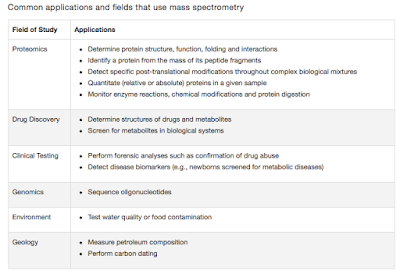Some news about MRSA
Greetings
Here's a thing that you may want to try if you are in a health care center. Find out what is the most bothersome bug (I'm referring to microbes), in the hospital. Chances are you will be told MRSA (Methicillin resistant Staphylococcus aures). Notably, people have tried to come up with new drugs, vaccines or other strategies, and desperation is on the scene.
MRSA was first reported in 1961, soon after the introduction of Penicillin. But the first clinical cases were identified in USA, 1968. As per the CDC, Methicillin-resistant Staphylococcus Aureus (MRSA) is a type of Staphylococcus aures, which is resistant to certain antibiotics called beta-lactams. These antibiotics include penicillin, methicillin, oxacillin and amoxicillin. The very importance of detecting MRSA has led to development of a variety of tests. I have detailed about them in brief here. There are 2 types of MRSA depending on its primary source- HA MRSA (Hospital acquired) and CA MRSA (Community acquired).
 |
| Table 1: Contrasts between CA and HA-MRSA. |
The most important question that I have been often asked about is, when MRSA has been detected, what does that mean in terms of patient care? Consider the following argument. Staphylococcus species represents an important normal flora especially in the skin of humans. S aureus is seen in a large variety of healthy people. As many as 25- 40% of people are know to carry MRSA in their body without any consequence. One of the argument is that if the person is in hospital for longtime, or is a health care worker treatment is justified. This is to avoid dissemination. I have often questioned this for the simple reason that there is enough MRSA already in the hospital and this doesn't account for extra burden. Do we need to try and treat such people thereby introducing a component of antibiotic resistance selection pressure?
 |
| Table 2: Immune based approach against Staphylococcus |
The problem doesn't end there. As I have said always, vaccine and immune based approaches are the best methods to combat microbes. Several companies have developed these approaches (well known products are shown in Table 2). However, most of them have failed to deliver the expected results and have been discontinued from research.
MRSA infections can be treated with drugs such as Vancomycin. Since vancomycin resistance is on slow rise several other molecules such as daptomycin, streptogramins etc have been proposed as next line of defense. However, we clearly need new antibiotics. The latest research from a group led by Mayland Chang and Shahriar Mobashery have discovered a new class of antibiotics which are potentially active against MRSA. The chemical is oxadiazole, which are Non-β-lactam Inhibitors of Penicillin-Binding Proteins. The chemical showed up in a screen of 1.2 million chemical in-silico search conducted by the researchers which on further tests showed a good activity.
At the end I want to make a digression, cause I thought this data is important in this page. Just as much as the treatment and identification of MRSA is important so is the deep seated Staphylococcus infection. Even the best of currently available methods, takes about a day for the diagnosis to be made. So if the diagnosis can be pointed right in the body in a very small turn around time that would be extremely useful. A proof of concept study was done by Frank etal. A short synthetic oligonucleotides with chemical modifications and flanked with a fluorophore and quencher was designed which could be cleaved specifically by staphylococcus aureus using micrococcal nuclease. The probe was systemically administered to a mice. The probe is activated in the areas of lesion which could be detected by imaging. Such noninvasive techniques are probably the tools of future.
To conclude, to fight MRSA we need to develop faster diagnostics, better antibiotics and maybe a vaccine that will come handy. We haven't still lost the battle
At the end I want to make a digression, cause I thought this data is important in this page. Just as much as the treatment and identification of MRSA is important so is the deep seated Staphylococcus infection. Even the best of currently available methods, takes about a day for the diagnosis to be made. So if the diagnosis can be pointed right in the body in a very small turn around time that would be extremely useful. A proof of concept study was done by Frank etal. A short synthetic oligonucleotides with chemical modifications and flanked with a fluorophore and quencher was designed which could be cleaved specifically by staphylococcus aureus using micrococcal nuclease. The probe was systemically administered to a mice. The probe is activated in the areas of lesion which could be detected by imaging. Such noninvasive techniques are probably the tools of future.
To conclude, to fight MRSA we need to develop faster diagnostics, better antibiotics and maybe a vaccine that will come handy. We haven't still lost the battle
O'Daniel PI etal (2014). Discovery of a New Class of Non-β-lactam Inhibitors of Penicillin-Binding Proteins with Gram-Positive Antibacterial Activity. Journal of the American Chemical Society, 136 (9), 3664-72 PMID: 24517363
Hernandez FJ, Huang L, Olson ME, Powers KM, Hernandez LI, Meyerholz DK, Thedens DR, Behlke MA, Horswill AR, & McNamara JO 2nd (2014). Noninvasive imaging of Staphylococcus aureus infections with a nuclease-activated probe. Nature medicine, 20 (3), 301-6 PMID: 24487433





Comments
Post a Comment